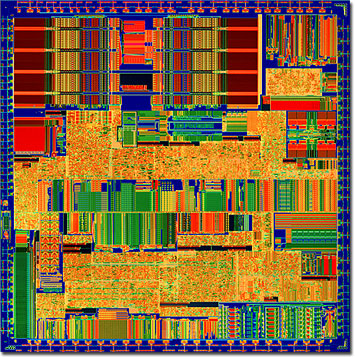 The first stand-alone microprocessor is developed nearly one decade after fabrication of the first integrated circuit. It has a processing speed of 740 kHz, contains 2300 transistors, and marks the beginning of commercial computing chips.
The first stand-alone microprocessor is developed nearly one decade after fabrication of the first integrated circuit. It has a processing speed of 740 kHz, contains 2300 transistors, and marks the beginning of commercial computing chips.
The function of the computer
A personal Cybermuseum
Cyrix Integrated Circuits -6x86 Microprocessor Die (Polysilicon Layer) The digital image presented below reveals surface detail present on a complete Cyrix 6x86 microprocessor die at the polysilicon stage of fabrication. Bus lines, registers, and memory caches were highlighted using tungsten light filtered with red, green, blue, and yellow gels in oblique illumination.





 LibreOffice
LibreOffice Firefox
Firefox
No comments:
Post a Comment